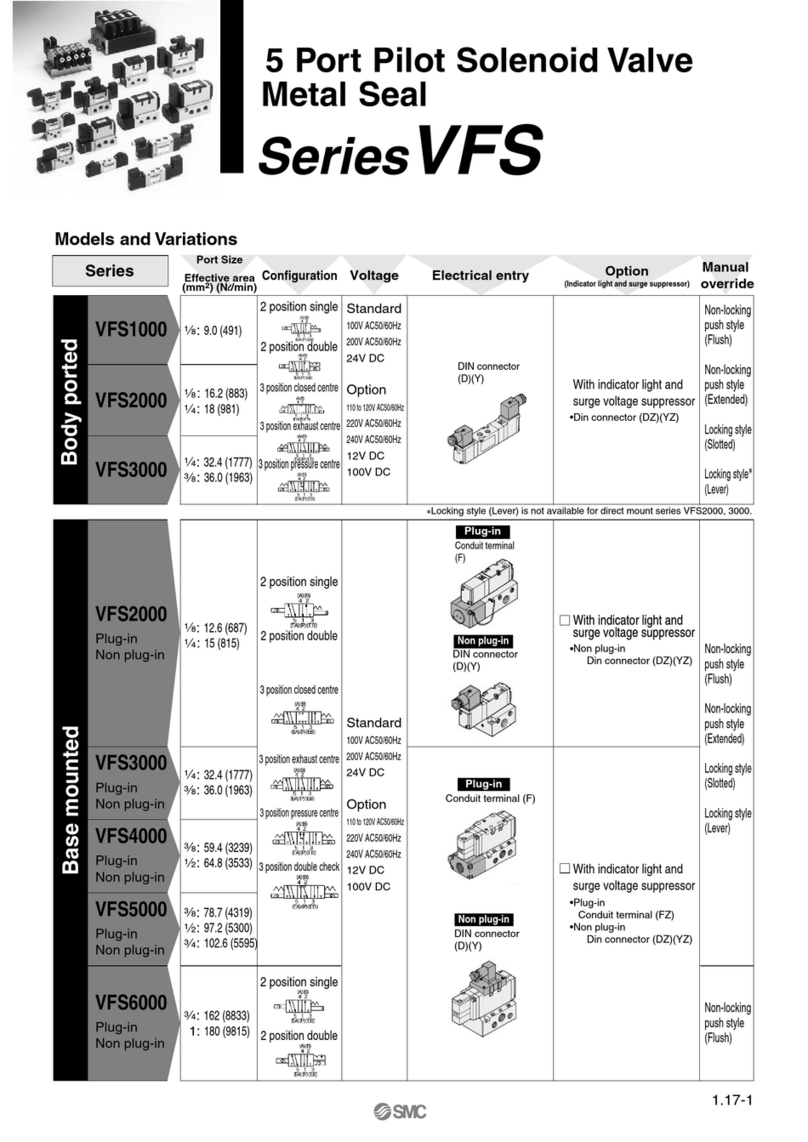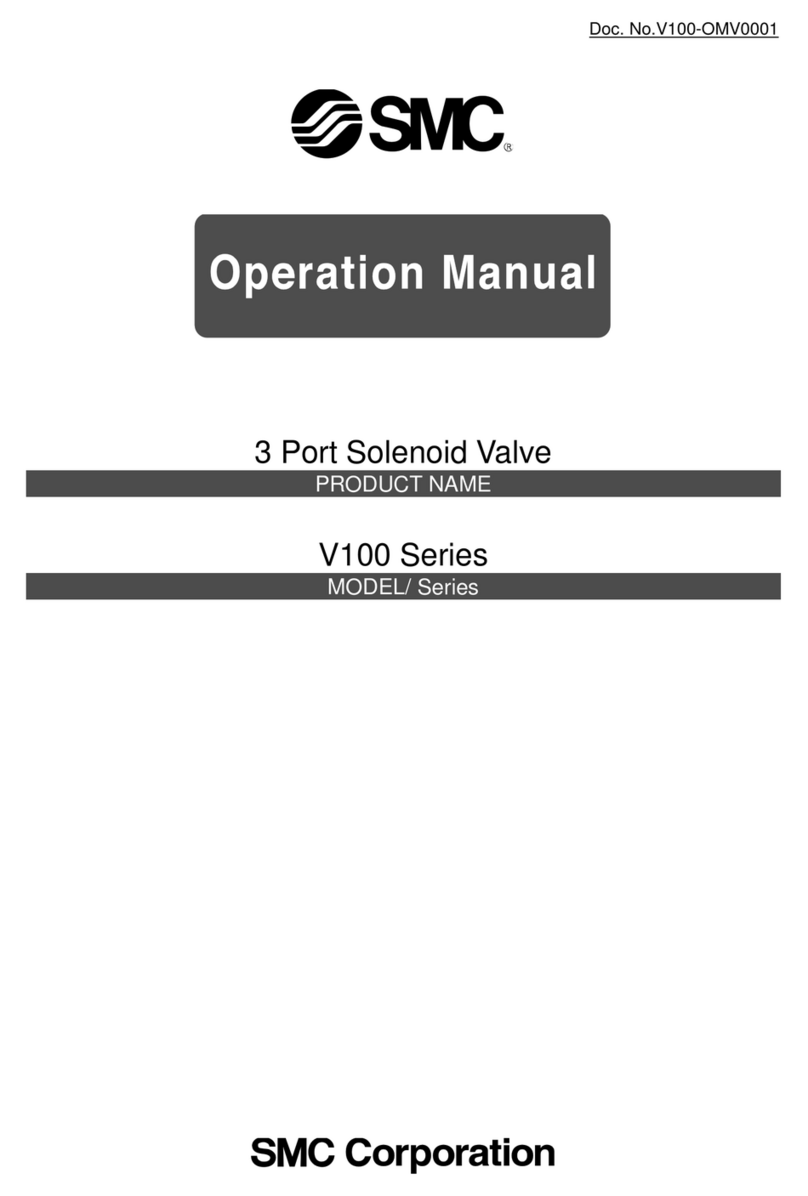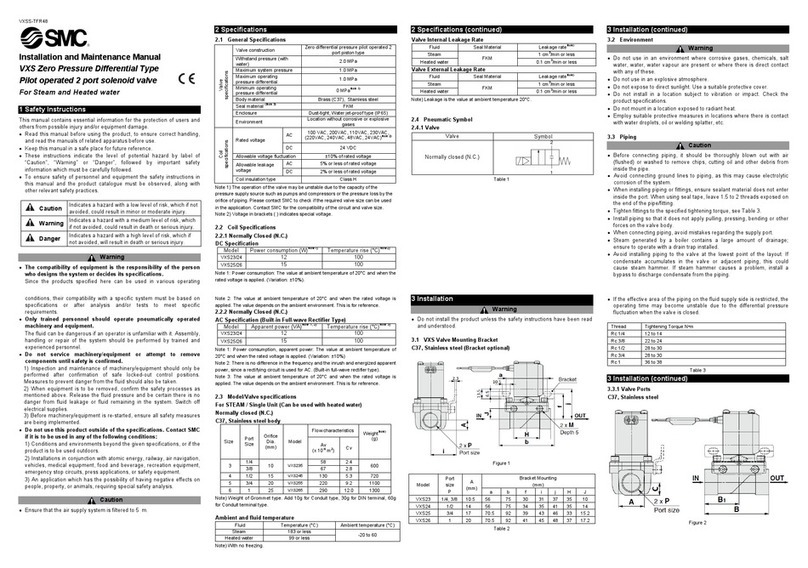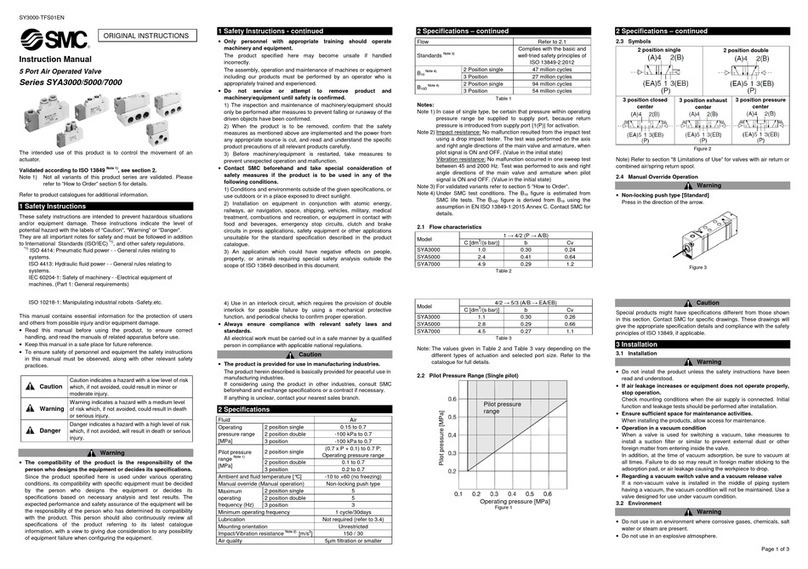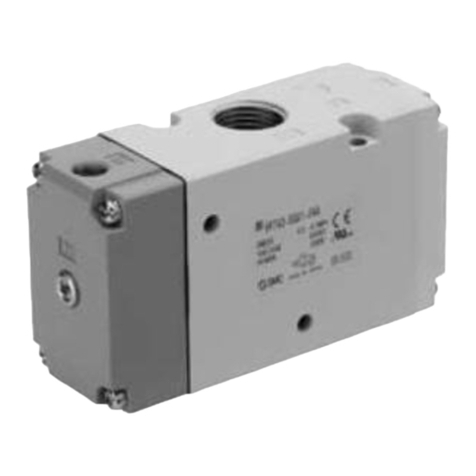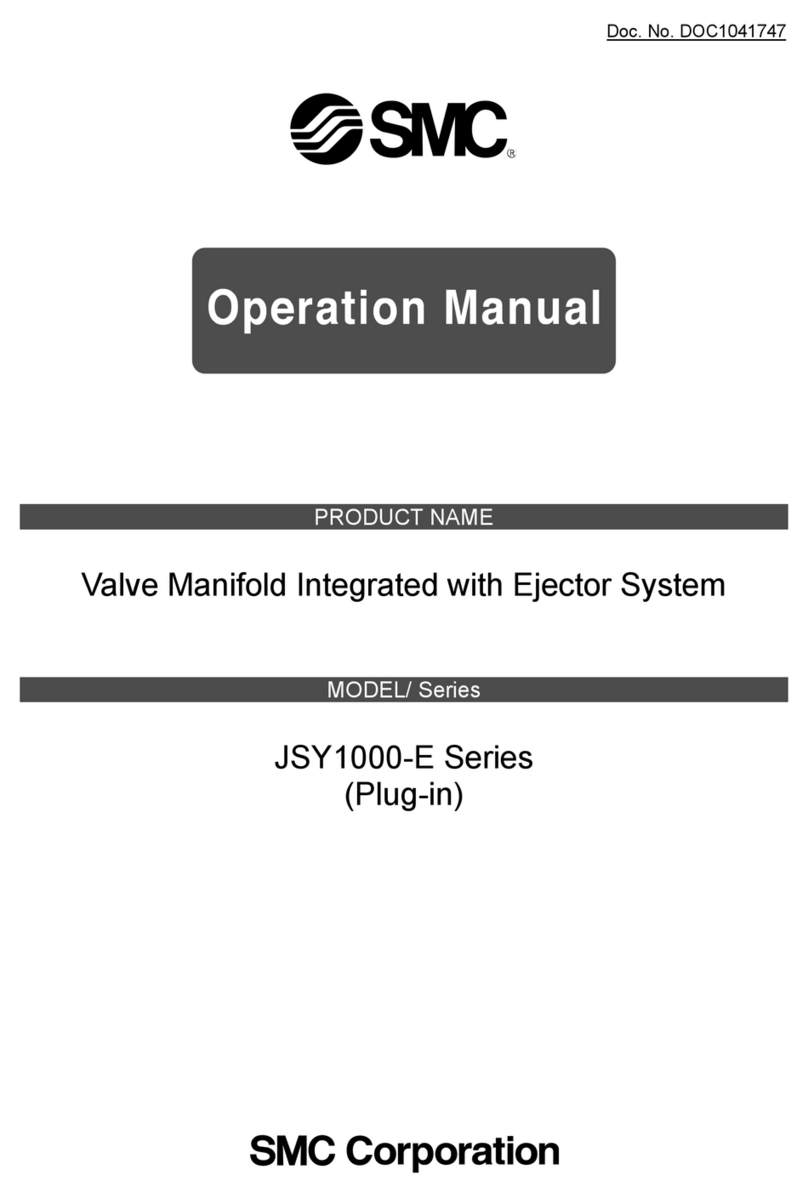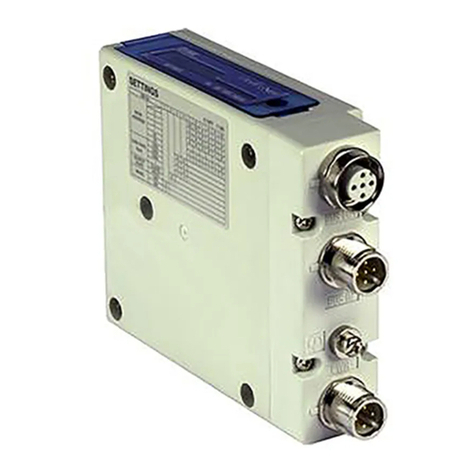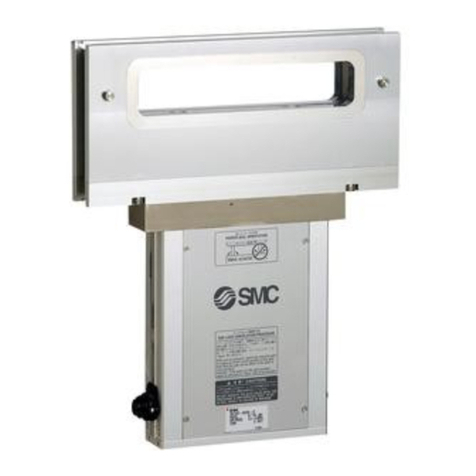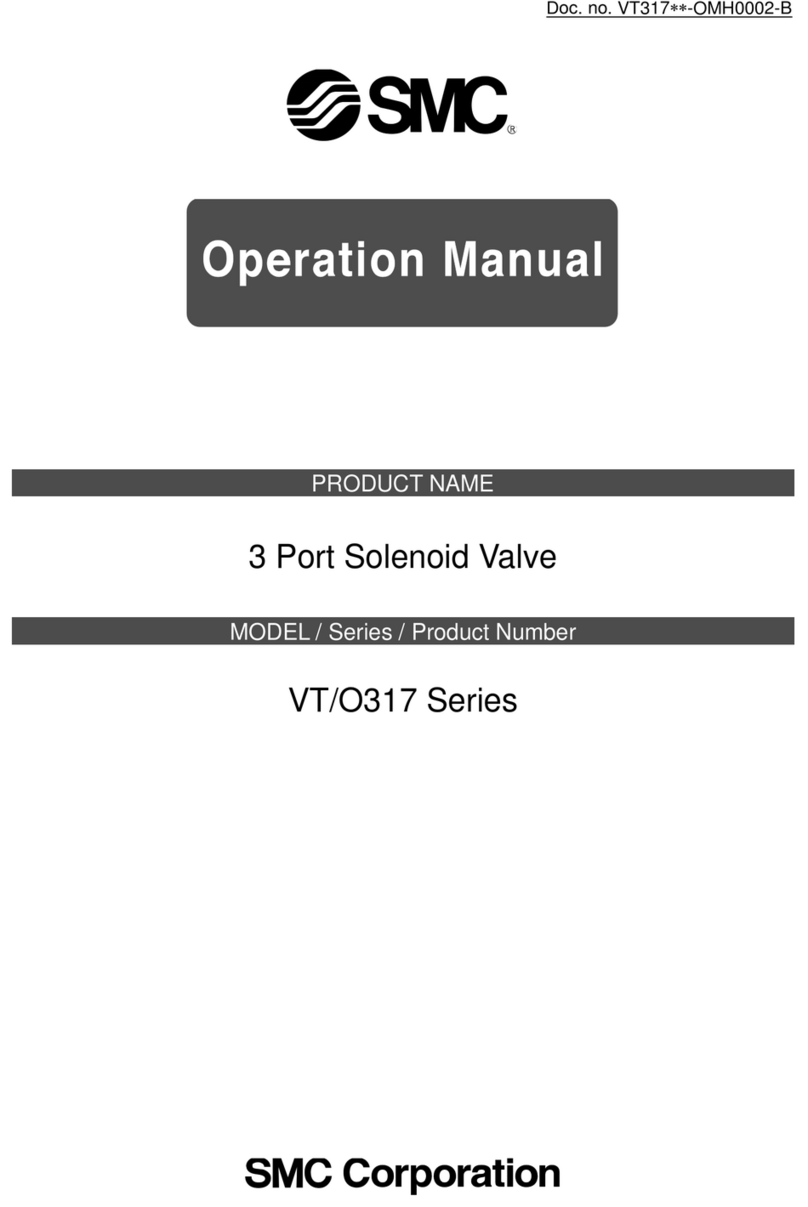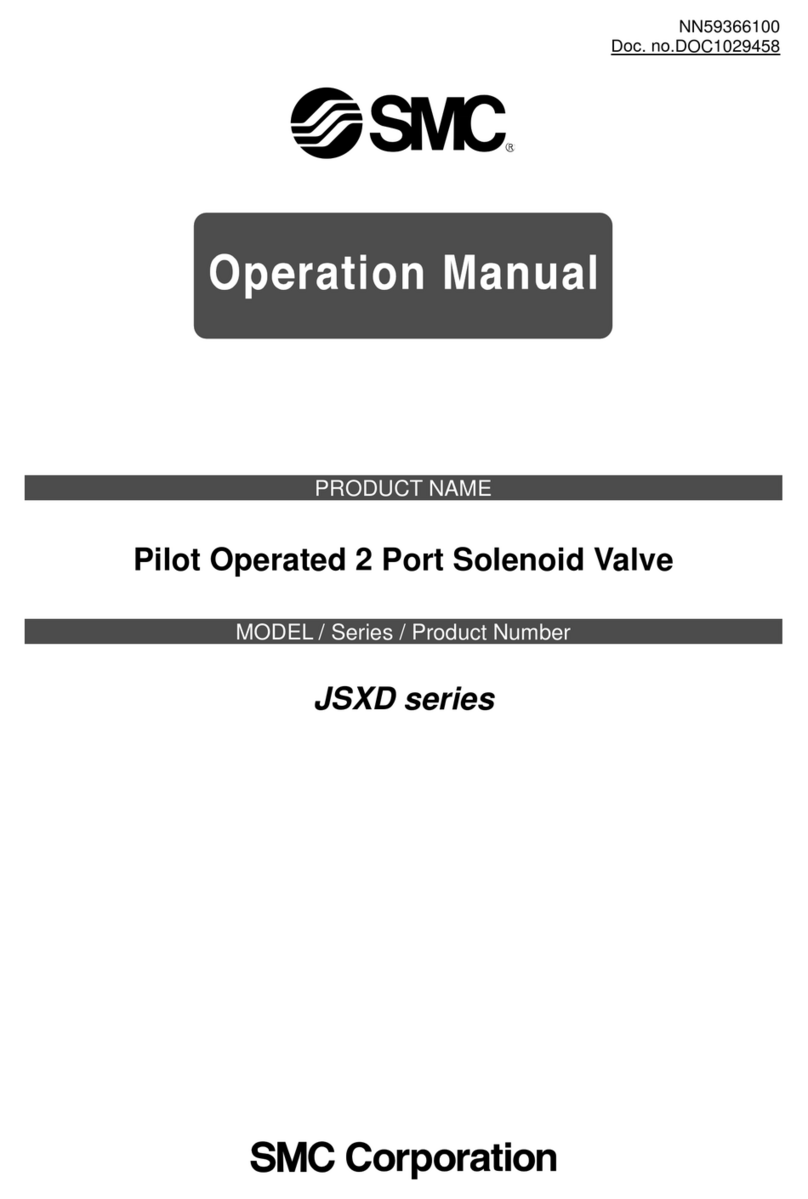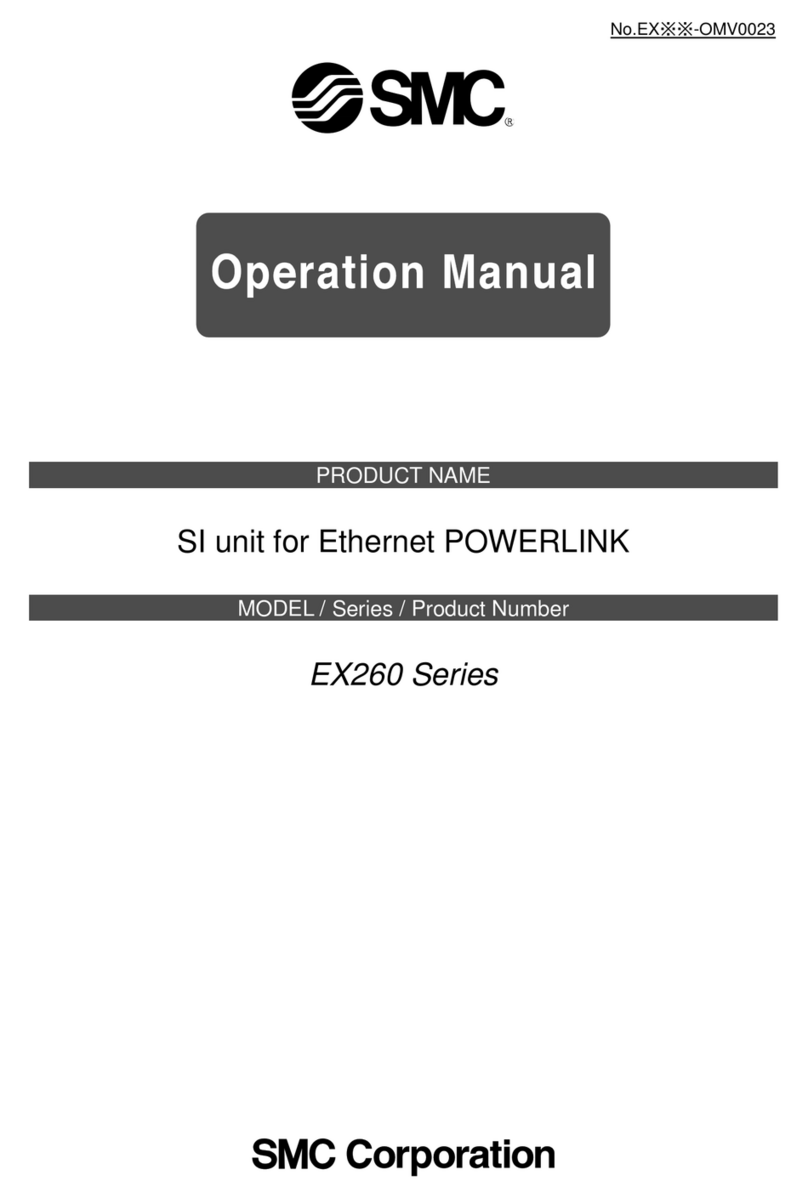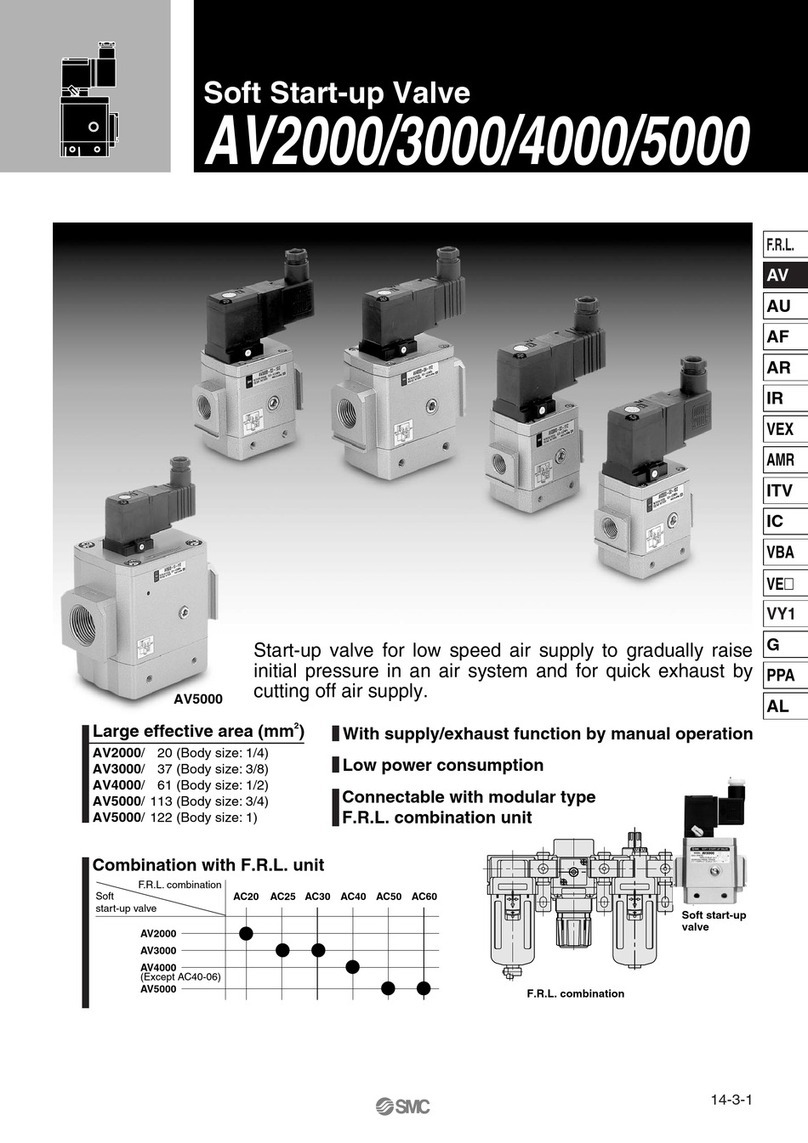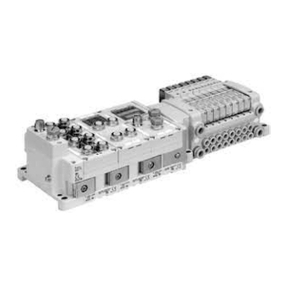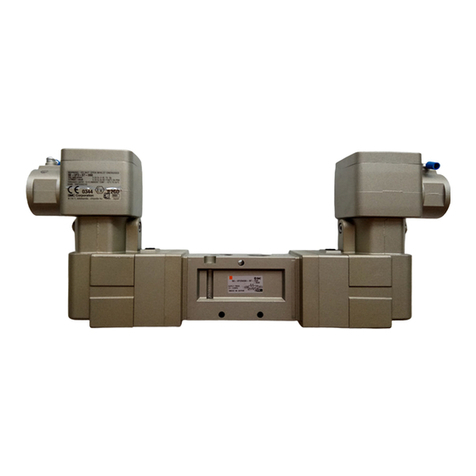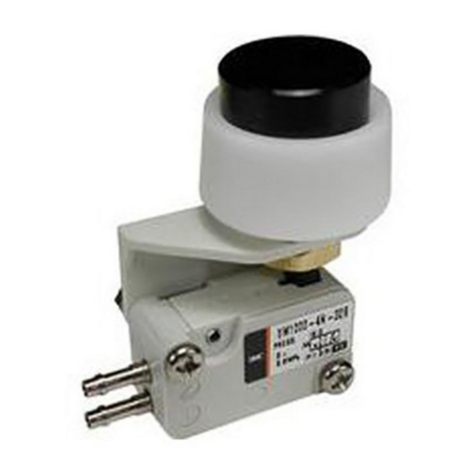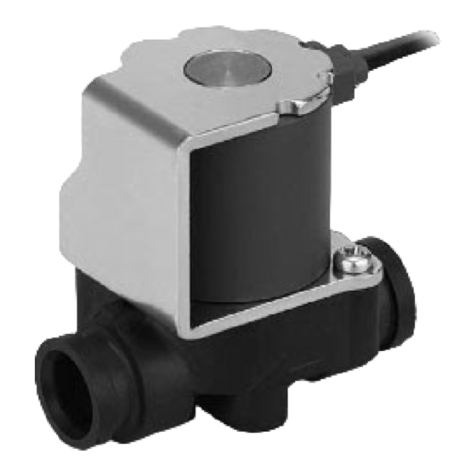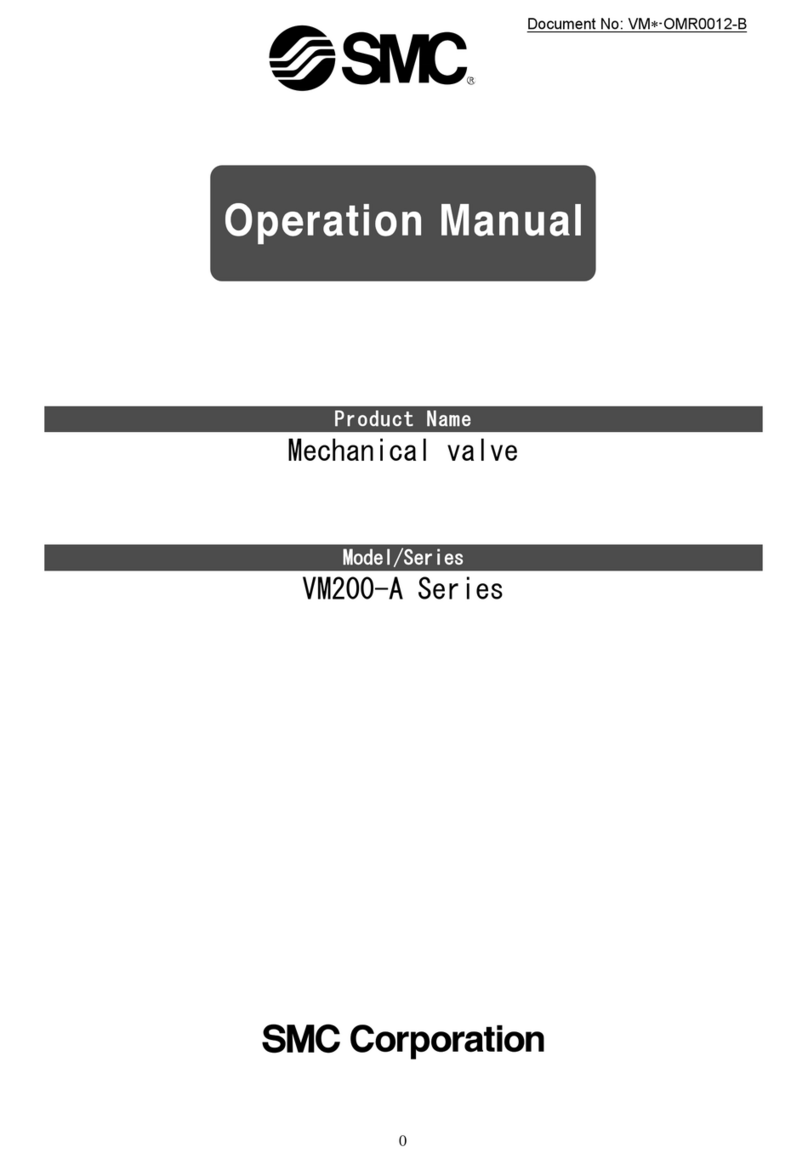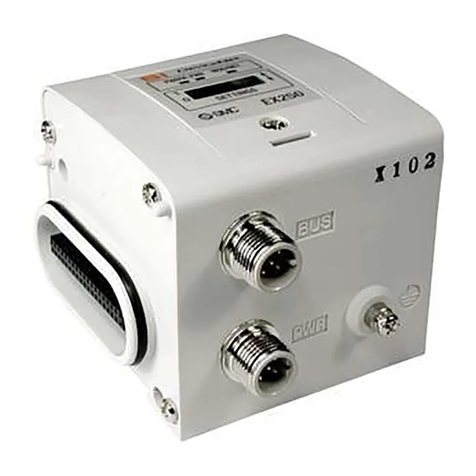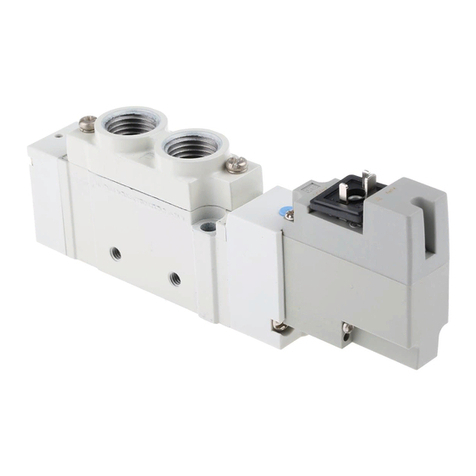
- 5 -
No.SYJ300-OMO0002-A
Piping
1. Refer to the Fittings and Tubing
Precautions for handling one-touch
fittings.
2. Preparation before piping
Before piping is connected, it should be thoroughly
blown out with air (flushing) or washed to remove chips,
cutting oil and other debris from inside the pipe.
3. Wrapping of pipe tape
When screwing piping or fittings into ports, ensure that
chips from the pipe threads or sealing material do not
enter the piping. Also, if pipe tape is used, leave 1
thread ridges exposed at the end of the threads.
4. Connection of fittings
When screwing fittings into valves, tighten as follows.
(1) Follow the procedures below when installing an
SMC fitting, etc.
1) M3
After tightening the fitting by hand, use a wrench to
tighten the fitting an additional approximately 1/4
turn. As a reference valve, tightening torque is 0.4
to 0.5N・m.
2) M5
After tightening the fitting by hand, use a wrench to
tighten the fitting an additional approximately 1/6 to
1/4 turn. As a reference value, tightening torque is 1
to 1.5 N・m.
Note) If tightened excessively, the thread of the
product may break or the gasket may deform. If
tightened insufficiently, the thread of the product
may become loose. In either case, air leakage
can occur.
(2) Follow the procedure of the manufacture when
fittings other than SMC is used.
3) Rc type
Tighten with the proper torque shown below.
Tightening Torque for Piping Applicable
Connection
thread Proper tightening torque
(N・
・・
・m)
Rc1/8 7 to 9
5. Piping to products
When piping to a product, avoid mistakes regarding the
supply port, etc.
Lubrication
1. Lubrication
1) The valve has been lubricated for life by the factory
and does not require any further.
2) If a lubricant is used in the system, use class 1
turbine oil (no additive), ISO VG32.
Once a lubricant is used in the system, lubrication
must be continued because the original lubricant
applied during manufacturing will be washed away.
If turbine oil is used, refer to the Material Safety Data
Sheet (MSDS) of the oil.
Air Supply
1.
Type of fluids
Please consult with SMC when using the product in
applications other than compressed air.
2.
When there is a large amount of drainage.
Compressed air containing a large amount of drainage
can cause malfunction of pneumatic equipment. An air
dryer or water separator should be installed upstream
from filters.
3.
Drain flushing
If condensation in the drain bowl is not emptied on a
regular basis, the bowl will overflow and allow the
condensation to enter the compressed air lines. It
causes malfunction of pneumatic equipment. If the
drain bowl is difficult to check and remove, installation
of a drain bowl with an auto drain option is
recommended.
For compressed air quality, refer to SMC’s Best
Pneumatics catalog.
4. Use clean air
Do not use compressed air that contains chemicals.
Synthetic oils including organic solvents, salt or
corrosive gases, etc., as it can cause damage or
malfunction.
1. When extremely dry air is used as the
fluid, degradation of the lubrication
properties in side the equipment may
occur, resulting in reduced reliability (or
reduced service life) of the equipment.
Please consult with SMC.
2. Install an air filter.
Install an air filter upstream near the valve. Select an
air filter with a filtration size of 5 µm or smaller.
3. Take measures to ensure air quality,
such as by installing an aftercooler, air
dryer, or water separator.
Compressed air that contains a large amount of
drainage can cause malfunction of pneumatic
equipment such as valves. Therefore, take
appropriate measures to ensure air quality, such as by
providing an aftercooler, air dryer, or water separator.
Caution Warning
Warning
Caution
SYJA300/3000 Series
Precautions for 5 Port Solenoid Valve ②
②②
②
Be sure to read before handling. Refer to main text for detailed precautions on every series.
